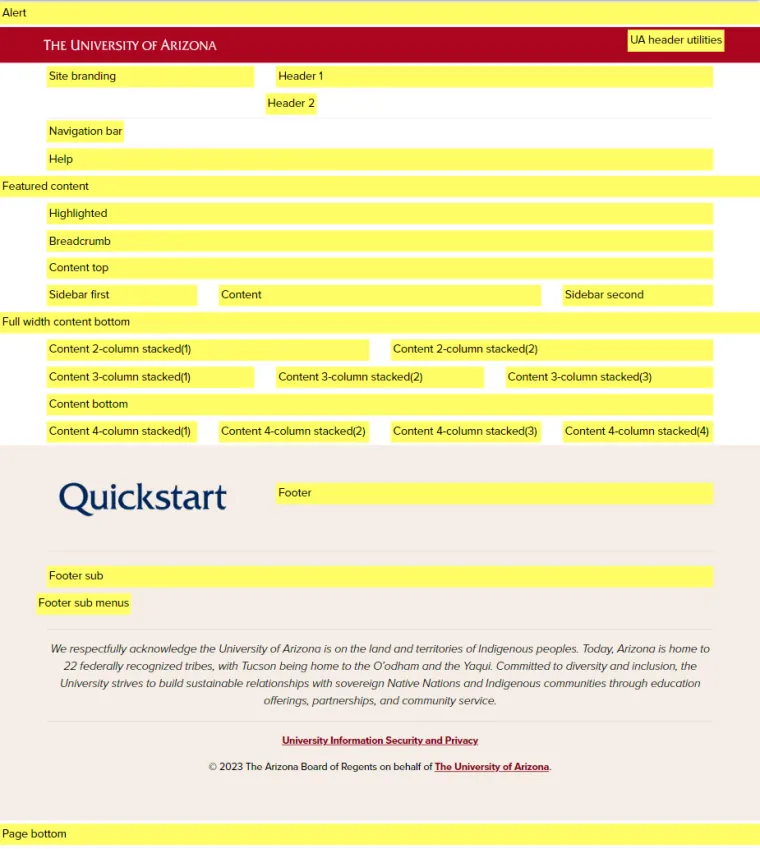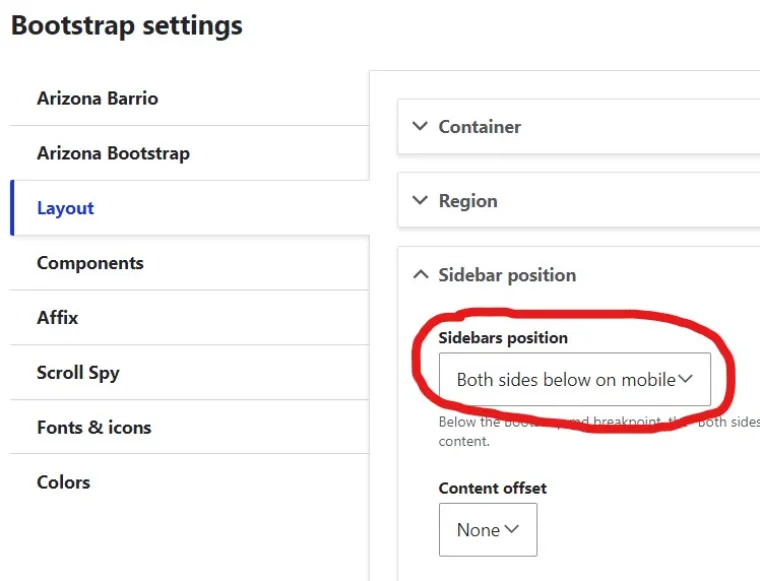Blocks are reusable pieces of content that are able to be displayed in a designated region on multiple pages throughout your website. The two most commonly used blocks are "flexible blocks" and "menu blocks".
Flexible blocks are constructed of block elements similar to how pages are constructed with page elements, the key distinction being the ability to display blocks on multiple pages.
Flexible blocks are provided by the Quickstart Flexible Block (az_flexible_block) module.
Menu blocks are provided by the Quickstart Block Types - Menu Block (az_custom_menu_block) module.
Menus are a block type that allows you to create a dynamic menu.
How to Create a Flexible Block
- Navigate to Manage > Content > Blocks.
- Select Add Content Block.
- Select Flexible Block.
- The Description field is where you provide a label for your custom block. Remember this label for when you place the block.
- Select the block elements you would like the block to feature.
- Note: As you select elements for your block, keep in mind the area of the page you would like the block to be featured in. Certain areas, like Sidebar 1 or 2 are not conducive to large page elements like photo galleries or text on media.
- Save.
Once you have created block, you can choose the region of the page you want the block to be displayed. Select the image below to view the block regions more closely.
- Navigate to Manage > Structure > Block layout.
- This will take you to a list of the regions of the page and the blocks displayed within each of those regions.
- Locate the region you would like the block to be displayed and select Place block. (See available them regions in the screenshot below.)
- This will display a list of the blocks that exist in your site. Search for the label you wrote in the Description field of the block you created and select Place block.
- Title is automatically set to be the same as the block label. Change it or uncheck Display title if you don't want a title to be displayed over your block.
- In the Pages section under Visibility, select either Show for the listed pages or Hide for the listed pages.
- Enter the file path (the /path section of the URL following the main site URL)
- For the Home page, the path is <front>
- Save block.
- Scroll down to the bottom of the next page and select Save blocks again to ensure your changes are saved.

- Create a page or edit an existing one.
- Select Add Text or navigate to an existing text area.
- Select Embed Block Content from the Editor Toolbar.
- Search your block's description label then click Next > Embed.
- Save.
By default, The left sidebar menu or block positions above your page content when viewed on mobile devices or small screens/displays. If your menu is large, this might occupy a lot of screen space before getting to your page’s content.
If you would like to change this so that the left sidebar instead position is below your pages’ content, follow these steps:
- Navigate to Manage>Appearance
- Under Installed Themes, find Arizona Barrio (default theme) and click the Settings button.
- On the left side, select the Layout tab
- Expand the option for Sidebar position
- From the Sidebars position dropdown select “Both sides below on mobile.”
- Image

- Save configuration
Useful Links
Keywords
Regions, Flexible Blocks, Custom Blocks

